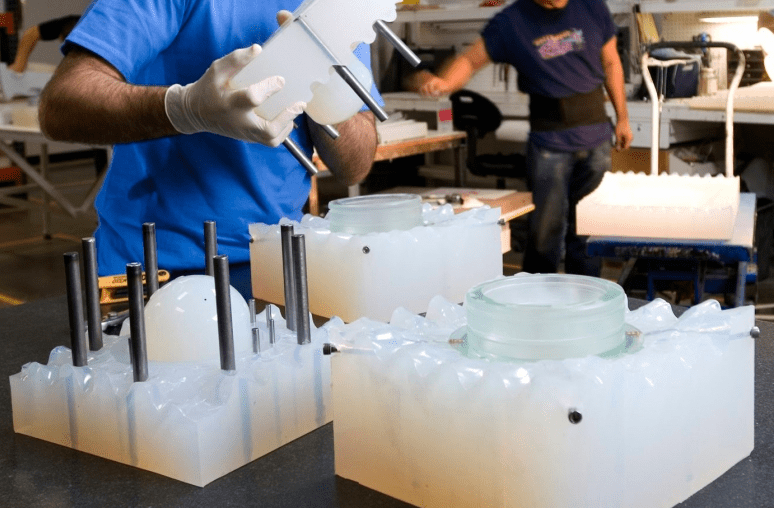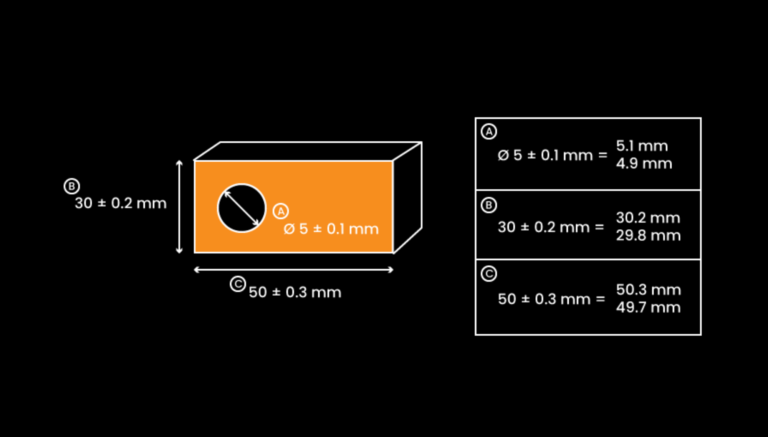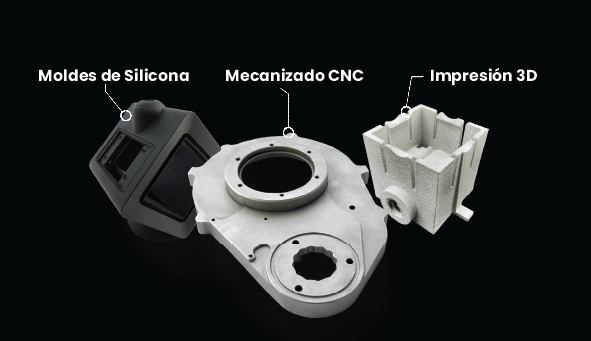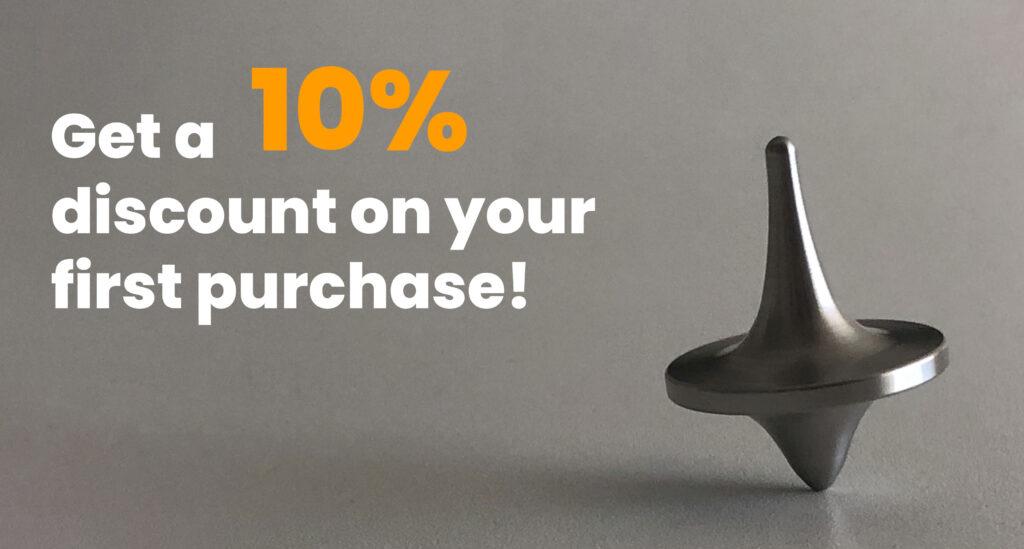Silicone molding (also known as polyurethane molding or vacuum casting) is a manufacturing process that uses silicone molds to produce plastic parts in a relatively simple way and without high costs or long lead times.
The silicone molds provide rigid or flexible end-use plastic parts with near production-grade quality.
At Proto&Go! we use a vacuum casting process to obtain parts, which is built without expensive and time-consuming production tools. Always, a pattern piece made by CNC machining is used, thus ensuring the finish and quality of the piece.
The vacuum casting process is carried out inside a vacuum machine in which two components that will form the polyurethane are introduced into the chamber. Once the machine has completed the vacuum, the components are mixed and cast into the silicone mold.
This process is carried out under vacuum with the main objective of facilitating the entry of the fluid into the mold cavity. In this way it is possible to avoid any air resistance that might remain inside.
As a result, products of high precision and exceptional finish are obtained.
- Advantages and applications of vacuum casting of silicone molds
- Vacuum casting: How does it differ from other manufacturing processes?
- The future of vacuum casting: promising trends
Advantages and applications of vacuum casting in silicone molds
Some of the advantages or benefits of vacuum casting are the following:
- Variety of materials and finishes
- It is an optimal process for low production volumes
- The quality of the finish is comparable to other technologies or part manufacturing processes.
- Obtaining the first parts in a short period of time
- Polyurethane parts as strong or tough as injection molded parts and stronger than 3D printed parts
On the other hand, it should be noted that vacuum casting of silicone molds has different applications. These parts are particularly suitable for obtaining a pre-series. This is due to its high level of quality (comparable to parts produced by other methods).
Some of these applications or uses are:
- Pre-launch testing of new products
- Market research or testing
- Prototyping
- Production of small series
- Advertising of new products
Vacuum casting: How does it differ from other manufacturing processes?
Vacuum casting is an ideal technology for mass production of parts with fine and complex details, while other methods, such as 3D printing, are excellent for prototypes and customized parts.
It is also a very cost-effective option for manufacturing silicone components in low-volume production compared to injection molding.
On the other hand, compared to other manufacturing processes, parts produced by vacuum casting can be created and delivered in a matter of days (depending on the size and quality of the parts). Therefore, it is a good option to use this process if you have a tight deadline.
In conclusion, compared to methods such as CNC machining, polyurethane casting is a cost-effective option for producing reusable molds in just a few hours. In addition, parts produced by this process fit perfectly and do not require additional steps such as sanding or drilling.
However, the choice of one method or another will depend on factors such as production quantity, design complexity, required accuracy and material. Each process has its advantages and the best option is to choose the one that best suits the specific needs of the project.
The future of vacuum casting: promising trends
As time goes by and with the continuous advancement of technology, it is very likely that we will see many innovations in the field of manufacturing parts in silicone molds. Such innovations could include improvements in process efficiency, new materials or design methods, among other factors.
The ability to produce high quality parts quickly and cost-effectively will continue to be an important and key factor in design and manufacturing decisions (especially in terms of prototyping and mass production).
In addition, customization and on-demand production are on the rise today and vacuum casting of silicone molds is a perfect method to meet these needs.
For more information about silicone molds or to request a quote, please visit our website: Proto&Go!





